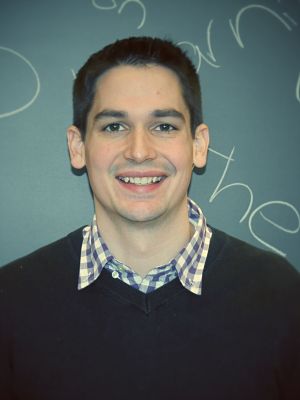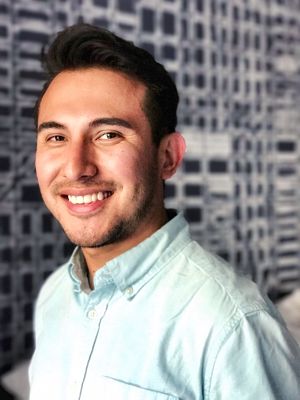The Architect
1996
El edificio más alto en el mundo.
In a primary school in the city of Guadalajara, Mexico, an eight-year-old child stares at a picture in a textbook. Their third-grade geography class is studying a big city in the United States called Chicago. They have skyscrapers there. The biggest is the Sears Tower, which, the book tells the class, is el edificio más alto en el mundo. The tallest building in the world.
The child runs their small fingertips over the page. What they see thrills them, fascinates them. The tower is 108 stories tall. The child can’t quite comprehend this. How do you build something so big?
The child thinks about their family’s house. Their father did his best to build a home with what materials he could afford. The father, a bricklayer by trade, goes back and forth across the American border many times each year, looking for work that will allow him to save some money to bring home. The “house” is one room, about fifteen by fifteen feet, with two beds on a dirt floor and no roof. The walls are cinderblock, and over them the father laid laminas, a cheap plastic material that is supposed to keep water out. It does not. The bed that the child and their sister share gets wet when it rains.
The child does not hate this home. It has its own kind of beauty. There is ample space to play outside, and there are always extended family members around to dote on the children. But the child has, with age, become burdened with the knowledge that not everyone lives in houses like this.
The child learns that Chicago is famous for its architecture. They learn that architecture is what you call designing buildings, and the designers are called architects. This new fact opens something inside of them, like the bright-purple petals of the ipomoeas that bloom in Central Mexico, stretching out to receive the cool rains that come in May. Suddenly, a dream unfurls: someday, they will be an architect. They will build something as big as the Sears Tower.
Three years later, the child’s mother will tell the children that their father found good work in the United States, and they are all going to live with him there. She will explain to them that things will be different in America. There will be more money. The child and their sister will have more opportunities. The water will not get inside when it rains. When their mother tells them what city they are going to, the child will be so excited they could scream. Now, they will be able to see it, actually see it. The tallest building in the world.
* * *
2012
For most of us, the career dreams that we harbor before all of our adult teeth come in eventually get tossed into the same psychic rubbish pile as our fear of the dark and our attachment to a particular stuffed animal. Most kids who dreamed of becoming an astronaut never orbit the Earth. Most who wrote an elementary school essay about why they want to be a veterinarian never get around to saving all of those horses’ lives. But in 2012, Antonio squirms their way out of a crowded train car, weaves through the kinetic bustle of the Chicago Loop’s morning sidewalks, and takes an elevator up to the offices of the “Park and Associates” architecture firm. [1] They are twenty-three years old, recently graduated from college, and enjoying the dewdrop-speckled dawn of a bright career. They are on their way to becoming an architect.
They learn that architecture is what you call designing buildings, and the designers are called architects. This new fact opens something inside of them, like the bright-purple petals of the ipomoeas that bloom in Central Mexico, stretching out to receive the cool rains that come in May.
The five-year architecture program at the Illinois Institute of Technology had been grueling. Antonio came to IIT with only a hazy notion of the day-to-day work of an architect. Many of the other students in the program had already done architectural drafting. Antonio started from square one. To add even more pressure, Antonio’s full-ride scholarship required that they not dip below a 3.5 GPA, an especially tall order when all of your coursework is in your second language.
Antonio never lost sight of their dream: to one day build skyscrapers. They took every studio design course available that might help them gain the skills to do that. In those courses, they caught the appraising eye of Professor “Caroline Park,” a rising star in the Chicago architecture scene who’d recently made a splash with her bold design of a downtown hotel. Park invited Antonio to intern with her firm over the summer. Antonio felt particularly lucky to snag this gig. Not only did Antonio like Caroline, but she designed high-rises. Suddenly, they were one step closer to their goal.
Architecture is like a decathlon: you have to be good at many different things. Technical specifications require advanced math and science skills, while reigning in a client’s big ideas requires a warm human touch. You have to speak many different languages, breaking down complex instructions to a construction crew in the morning and then deciphering intricate budget spreadsheets in the afternoon. Finally, architecture is an art: it requires a gift for vision, an innate spark of genius that most aren’t born with. That range of very different skills rarely present themselves bundled together in one person. But Park recognized this elusive combination when she saw it. After the internship, she offered Antonio a part-time job during their last year in school. After they graduated, she offered them a full-time job.
On a blustery December morning six months into their job at Park and Associates, Antonio takes off their coat and sits down at their desk in the workspace they share with a handful of architects. They look the part of the modern cosmopolitan design professional, with their stylish brown glasses and a sharp jacket from Topman. Antonio is settling in to the job and loving it. At a small firm like Park, they get better assignments with more design freedom than they would have at a larger firm. Caroline often gives Antonio interior design work, which lets their creative spirit soar. At the same time, they are also relishing the other freedoms of early adulthood: their salary allowed them to move into their own apartment for the first time in their life, a cozy place in Lakeview. Piece by piece, Antonio’s American dream clicks into place.
“Antonio, can we talk in my office for a second?” Park asks, swinging by Antonio’s work station. They follow her down the hall to her office, walking past design boards that Antonio created for various building interiors, which now hang on the office walls. As they take a seat in Park’s office, Antonio is unconcerned. It’s common enough for Caroline to pull them aside to check in with them about projects.
Park is a great boss. She goes out of her way to mentor Antonio, taking them along to client meetings and construction sites just to give them the experience. Their relationship is friendly. They’ve been out for drinks a couple of times. Antonio deeply admires Park, a woman of color thriving in an industry that has long been a white male’s field.
“Quick thing—we switched payroll companies,” she says, bringing up a window on her computer. “And apparently there was an issue when they were rolling the info over. They said your Social Security number didn’t match your name, I guess?”
Antonio breathes slow, steady. They concentrate on keeping their face natural. Pursed lips. A head cocked slightly in confusion. They try to conceal all signs of the panic that wipes their mind clean of coherent thought in one hot flash. “Oh? That’s strange,” they say.
“Here, can you take a look?” She pivots her screen toward them.
Antonio’s heart hammers. They squint their eyes and study the screen. They pretend to carefully go over the digits. Nine digits that Antonio conjured at random, as one might choose lottery numbers.
Park and Antonio’s co-workers know them as an ebullient extrovert with a bright staccato laugh and as a sharp-eyed designer. They don’t know that Antonio is an undocumented immigrant. It is a secret they keep even outside of work, even among good friends. Antonio was taught not to talk about immigration status the way other children are taught not to talk to strangers. From the day their mother brought them to this country, she warned them to never discuss how they got to America, not with anyone. If someone asks, say that you’re a citizen. If someone accuses you of not having papers, deny it.
They squint their eyes and study the screen. They pretend to carefully go over the digits. Nine digits that Antonio conjured at random, as one might choose lottery numbers.
“Yes, I’m pretty sure that’s the right number,” Antonio says in Park’s office. “And they said it didn’t match?” Their puzzled tone says this incident is unexpected and perhaps a little annoying, but ultimately not of any real concern to me, because I am confident this minor mix-up will be sorted out.
“Yeah, that’s what they said.” Her attitude is casual. If Park has begun to suspect that Antonio does not have a valid Social Security number, she isn’t showing it.
“Well, you know, it’s maybe possible I misremembered. Let me check with my Mom. She has my original Social card, back at the house.” Their only thought now is of buying time. Time to breathe, time to think. If they can just get out of this tight, hot room, maybe they can come up with a plan.
As Antonio walks back to their desk, the liquid terror in their head begins to cool into solid, nameable fears. The anxiety comes in layers.
At the molten core of their anxiety sits the same ultimate fear that first comes to any undocumented person’s mind when a situation brings their immigration status to light. Antonio runs through the standard survival questions. How well do I know this person? Would they turn me in? They try to remind themselves that Caroline is a kind person, and she cares about them. But the images bubble up anyway. Images of Park on the phone in her office right now, making a call. Images of officials stepping off the elevator in Kevlar vests with “ICE” stitched across the front. Of handcuffs, white vans, detention cells.
The second layer of anxiety is made of dollars and cents. Antonio knows that they are about to lose the only steady paycheck they’ve ever had. How much longer can they keep paying rent on their apartment? Can they break the lease? How much longer can they keep buying food?
The final layer of anxiety is more existential, a toxic atmosphere that makes it painful to breathe. It is the anxiety of realizing that perhaps nothing Antonio has done in their life matters. Salutatorian of their high school class. Graduating college with honors. Nailing every assignment Caroline has given them. Because Antonio can’t give the company a valid Social Security number, none of that matters at all.
For the next two weeks, Antonio goes to work each morning as if everything is normal. But they carry fear inside them every moment, like a parasite burrowed in their gut. When Antonio doesn’t follow up with Park like they promised, she sheepishly approaches them again. This time, Antonio tries a desperate gambit:
“Do you want me to talk to the payroll company directly?”
Antonio calls them up and attempts to bluff their way out of the mess. But it becomes clear that the payroll company is using “E-Verify,” a name known and feared by many undocumented immigrants in the workforce. The E-verify program is run by the Department of Homeland Security, and once its database flags a mismatch, there is no way to wriggle off the hook.
After that, Antonio is out of moves. They go back to Park’s office, sit down, and do one of the hardest things they have ever done in their life: they tell their boss they are undocumented.
Along with the deep fear of disclosing their status, there is something else in that office with Antonio, something even heavier and more paralyzing: shame. They are ashamed that they lied to Caroline for this long.
Park, for her part, is characteristically nice about it all. She empathizes. She, too, is the daughter of immigrants. But she doesn’t seem to fully understand. She says that once Antonio figures out the situation, the office will get them right back to work. She seems to be under the impression that it will be easy to get immigration status.
Antonio tries. They pay a hefty fee to consult with a lawyer about their eligibility for DACA. Obama’s Deferred Action for Childhood Arrivals program, announced earlier that year, was designed for people like Antonio. It came out of a failed attempt to pass the DREAM Act through Congress, legislation which would have granted status to young people who were brought to this country by their parents when they were young and who received their education in the US. This generation of kids in legal limbo were dubbed the “Dreamers.”
But for Antonio, the dream had been punctured one night the year before. After work, they’d gone out for drinks in Chicago’s Boystown neighborhood with friends from the firm. On the way home, Antonio was stopped by the police and failed a field sobriety test. In Illinois, a first-time offense for driving under the influence is typically a misdemeanor, but the charge is aggravated to a felony if the driver doesn’t have a valid license. Antonio couldn’t get a driver’s license—at the time, Illinois residents needed a Social Security number for that, too.
In court on the felony charge, Antonio presented a letter that begged the judge to consider Antonio’s hard work and bright future when imposing a sentence. The letter was written by Caroline Park. Antonio received community service and probation, which they completed successfully, but immigration authorities still consider the incident a conviction, and it prevents Antonio from ever receiving DACA.
Antonio and their lawyer also discuss the possibility of Park and Associates sponsoring them for a business visa. But Antonio would be barred from receiving such a visa because they entered the country illegally—it does not matter that they were brought over at age eleven by their mother. Even if Antonio was eligible for such a visa, Park and Associates would have to pay more in fees and attorney costs than the small firm could possibly afford.
In late December, Antonio leaves the office for the holiday break along with all the other employees at Park. After New Year’s Day, everyone returns. Antonio doesn’t.
* * *
2013
As a new year dawns, Antonio scrambles to sublease their place, since the landlord wouldn’t let them break the lease. They move back in with their parents, hauling in boxes they triumphantly carried out less than a year before. Antonio’s parents had left the bedroom exactly the same, though it would now contain things Antonio has brought back from their time in the professional class: a wardrobe of the latest fall fashions, a blue leather briefcase from Zara. Souvenirs from a life put on hold.
Antonio’s parents had left the bedroom exactly the same, though it would now contain things Antonio has brought back from their time in the professional class: a wardrobe of the latest fall fashions, a blue leather briefcase from Zara. Souvenirs from a life put on hold.
Dark winter days stretch out before Antonio with nothing to fill them. Sometimes, they find themselves going downtown for no reason. Sometimes, they hang around the IIT architecture lab, updating their portfolio. They plot ways to get back into the industry. Maybe they could do freelance design work. Maybe they could start their own company. But down every alley Antonio pursues, they find the brick wall of the United States immigration system blocking their path. They drink a lot. They are quickly sliding into a depressive muck they know they might never escape.
In college, Antonio learned from an at-the-time boyfriend about a group of young, undocumented organizers called the Immigrant Youth Justice League. Antonio attended one of the group’s events, but didn’t disclose their status to anyone there and didn’t follow up with the group afterward. Antonio had been too frightened and ashamed to talk about their status with anyone, even others in the same situation. Instead, they kept their focus on school. After graduation, they were focused on their job. They didn’t think much about IYJL again, too busy cashing in on that promised better life that brought their family here. Between work and jogging and going out with friends and all of the other things young professionals do, Antonio didn’t have time for politics.
Now, they have nothing but time. They need something to do with all of that time. And something to do with the pain.
A couple of months after leaving Park, Antonio emails one of the IYJL organizers and asks how they can get involved. As it turns out, IYJL has an event coming up. It’s called “Coming Out of the Shadows.” There, Antonio meets a lot of other undocumented young people. Listening to their stories, Antonio is swept up in the uncanny excitement that comes with discovering that your isolated experience is widely shared. Here are others facing the same struggles. Others dealt the same raw deal. And these young people aren’t wallowing. They are fighting back. Antonio can feel rage and humiliation change shape and become something else that jolts their tired heart awake. They feel empowered.
Suddenly, Antonio has a mission. They attend the weekly IYJL meetings, where the group plans their next moves. IYJL is currently planning a campaign against one of their member’s deportations. They need someone to design the flyer.
“Does anyone have any graphic design experience?”
“Yes,” Antonio says. “I do.”
Antonio quickly becomes a member of the team and is thrown a wide variety of tasks, from social media management to liaising with the press. Being an organizer, as it turns out, is like a decathlon: you have to be good at many different things.
At the press conference IYJL holds to protest the young man’s deportation, they ask Antonio to speak. Antonio likes public speaking, and they’re good at it. But speaking to a throng of strangers and TV cameras about rights for undocumented immigrants? It’s a lot to ask of someone who, just a few months ago, was too frightened and ashamed of their status to voice it to a close mentor. Antonio has to decide if they are ready to face that fear—a decision that will alter the course of their life.
* * *
2017
In Chicago’s City Hall, outside the Mayor’s office, a mural depicts the city’s skyline in bright, pastel tones. In the painting, one building soars so high that the top spire is just out of the frame. The building used to be called the Sears Tower, but it’s not anymore. It used to be the tallest building in the world, but it’s not anymore.
The building used to be called the Sears Tower, but it’s not anymore. It used to be the tallest building in the world, but it’s not anymore.
Today, people swarm the area in front of this mural. They are organizers, activists, and protesters. They are black, Latinx, white, Arab, and Asian. They gather in a loosely-organized clump behind a podium while TV crews set up cameras and lights aimed at the press conference that is about to begin.
Antonio works the crowd. They seem to know everyone. They hug one of their comrades from Organized Communities Against Deportation, the group that the Immigrant Youth Justice League has since morphed into. They give a big wave to their friends in the Autonomous Tenants Union, a housing justice group Antonio co-founded and co-leads. Then they glide further into the crowd to catch up with co-workers from their day job, where they are a program administrator at an activist legal group. When another organizer takes the mic to call for attention, Antonio settles into a spot behind the podium.
They quietly review their notes as the first speaker addresses the media. At today’s event, groups from across the city and across racial lines will signal their resistance to President Trump’s attacks on sanctuary cities and demand that Chicago maintain—in fact, increase—its protections for undocumented immigrants. Antonio is speaking on behalf of OCAD, as they often do. They adjust the neckline of the smart blue sweater they wear over a collared shirt. They give their well-coiffed hair a final pat.
The speaker calls Antonio to the podium, to the cheers of the crowd. They stride forward with purpose. They grip the edge of the metal lectern and sweep steady eyes over the press and spectators. The click-click of cameras can be heard as white flash reflects off their glasses. When Antonio speaks, they let some of the anger and resolve and power that rattle inside of them show as a slight quiver in their voice.
“My name is Antonio Gutierrez. I am undocumented, and I am unafraid.”
[1] The name of the firm and its principal architect have been changed.

 Chad Baker is a legal aid attorney in Chicago, IL. He has provided free legal services to low-income communities in the areas of immigration, housing, family, and healthcare law. He graduated Harvard Law School in 2015, where he served as executive director of the Harvard Legal Aid Bureau. He is the author of several plays that have been performed at many theatre festivals around the country. He is currently a student in the master’s writing and publishing program at DePaul University.
Chad Baker is a legal aid attorney in Chicago, IL. He has provided free legal services to low-income communities in the areas of immigration, housing, family, and healthcare law. He graduated Harvard Law School in 2015, where he served as executive director of the Harvard Legal Aid Bureau. He is the author of several plays that have been performed at many theatre festivals around the country. He is currently a student in the master’s writing and publishing program at DePaul University.



